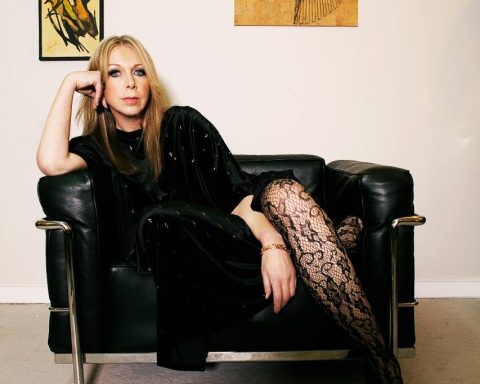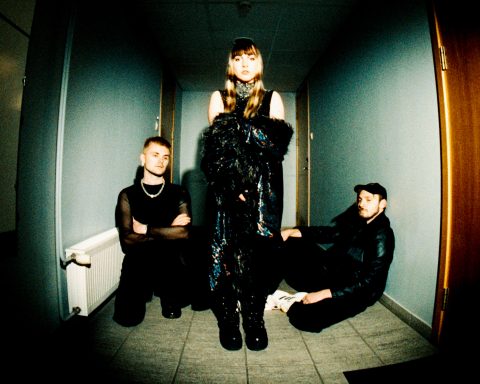The music of AMÉMÉ blissfully blurs the lines between melodic techno, Afro, and deep house. To the artist born Hubert Sodoganji, it’s the result of absorbing the myriad genres that orbit his existence. This uniquely-selected patchwork of sounds is both intentional and innate. As AMÉMÉ reveals the winding journey to map his musical DNA, the reasons behind that hazy line become clear.
Early Influences
Born in the West African country of Benin, Sodoganji had a rich musical upbringing. Soukous music from Congo dominated the country’s mainstream in the early ’90s. In addition, the rhythmic chants of Koffi Olomide and Viva La Musica figured heavily into Sodoganji’s sonic diet. His Nigerian mother loved the legendary Fela Kuti. Sodoganji’s brother, his most passionate and fiercest musical influence, was a fan of French rappers like MC Solaar.
Like most Benin residents, music formed the backdrop of Sodoganji’s life. In fact, his earliest memories are of how ingrained rhythm was in the musical makeup of his country. “Benin is very cultural. We’ve got ceremonies and rituals,” he explains.
“From the get-go as a kid, nobody ever taught me how to play drums,” he says. “It’s something natural because there was a drum laying around the house. I recall that all my cousins, my brothers, every single person I knew, could play drums.”
A Trio of Hometowns
That intrinsic sense of timing is evident all over the AMÉMÉ catalog. Sodoganji’s style balances his rich heritage with sounds from the two other cities he’s called home during his life. “I have the rhythms and drums from Benin, the swag and the drive like New York, and the precision from Berlin.”
"I have the rhythms and drums from Benin, the swag and the drive like New York, and the precision from Berlin."
Shifting between these three cultures requires both mental acumen and technical dexterity. The perfect blend can only emerge from a union between the organic, analog, and digital worlds. Roland gear has become instrumental to this process.
Gear that Bridges the Gap
While the TR-8S is the backbone of the AMÉMÉ sound, traditional drum machines aren’t as nuanced as the drums Sodoganji learned to play in his youth. The Handsonic HPD-20 helps fill the gaps. Together they create a workflow balancing the pulsing syncopation of Benin with the accuracy of Berlin techno.

The transition required patience. “I had a little bit of a hard time with the Handsonic coming from natural drums,” he explains. “The feel of the leather, the way you can manipulate different touchpoints to diversify the sound weren’t there.”
Then came the breakthrough. Sodoganji realized that he could use the same drum patterns he’d picked up early on but swap out the sounds to take those patterns to another realm. “Getting into the studio and discovering this piece of equipment was the first challenge to reprogram my brain. I realized this is a tool that allows you to do a lot more.”
Nonconforming Process
True to his organic approach, Sodoganji doesn’t conform to any solid starting point for his music. For example, the AMÉMÉ track, “PATCHIDO,” centers around a swaying vocal. “PATCHIDO is actually a cultural sound from Benin. I grew up with it,” AMEME explains. “But I really knew that I wanted to use the vocal to create something and bring it into the electronic world.”
His equipment speaks to both sides of his process. Sodoganji finds himself utilizing the TR-8 to create a foundation for his music, as “it allows me to be more structured.” Conversely, the Handsonic functions as an extension of his innate rhythmic sensibilities. He also keeps a SYSTEM-8 and a JUNO-06A in the studio for synth textures.
"The TR-8S is your building block. You use that to set everything up. To get yourself structured, it gets your head straight."
“The TR-8 is your building block,” he posits. “You use that to set everything up. To get yourself structured, it gets your head straight. And then once you’ve got the structure built out, it’s time to break out the Handsonic so I can feel things.”
Letting Instinct Be the Guide
Ultimately, this visceral element sets AMÉMÉ apart from many of his musical contemporaries. In a world that snaps everything to the grid, AMÉMÉ isn’t afraid to experiment and let instinctive sensibilities guide the story.

"I want to experiment and do amazing stuff and let people vibe with it. Just bring a little bit more love into this world."
For Sodoganji, it comes down to a deep appreciation for his chosen mode of expression. “I love the term Afro, and I love the term melodic. I love old terms, and I respect them, but the reality is that I love music.”
That passion is what inspires him to create such emotive AMÉMÉ tracks. Still, the magic doesn’t happen overnight. “I want to be able to marinate it and experiment and do amazing stuff and just let people vibe with it. And, just bring a little bit more love into this world.”







